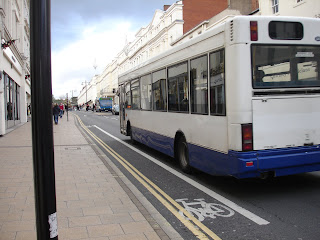Perhaps one of the big differences in between the Netherlands and the UK, and indeed probably all of Europe, is the funding of cycling infrastructure.
Sustrans is a charity and its aim is to promote sustainable transport in the form of walking, cycling and other low impact methods.
It is probably best known for its National Cycle Network which is gradually emerging across the UK both on and off road. It probably says more about the attitude to cycling from governments than anything else that it falls to a charity with no income other than its supporters and any fund raising activities to instigate the National Cycle Network.
A large amount of the funding for the initial phase of the network came from the National lottery, although this had to be match funded from other sources.Local Government has contributed to the development in many cases - more of this later - and the tax levied on landfill has helped in others.
Each local Authority has to produce a Local Transport Plan which usually last for 3 to 5 years and is OKd by the department for Transport. These determine the amount of money to be spent on all forms of transport, including roads, and cycling gets a small percentage.
When funding from this source the main things being looked for are travel to work and shops, safe routes to schools and a little for recreational cycling. So where the National Network leaves urban areas the chance of funding from LEAs is low as there is a very limited annual budget.
A section of the national Cycle Network passes through Leamington. It is part of route 41 which begins in Bristol and ends in Rugby. There is a section running from Bristol to Cheltenham and a few short sections, both on and off road, up to Stratford on Avon where it is then sign posted on minor roads to Warwick.
From Warwick it is mainly off road to Leamington
and then leaves Leamington on the canal
until it joins the old rail bed towards Rugby.
So far any attempt to get a bridge and then surface the remaining 8 kilometres that are unused has been unsuccessful due to no funds being available from either the Lottery fund or Local Authorities.
We are now starting a campaign at local level t
o try to get funding - probably upto £2 Million with a bridge, £1.25 without is a guestimate.
Whilst this section of the route would not be particularly useful for commuting or schools it would provide a long safe off road recreational and touring route, some 18 miles of off road.
What would have happened in the Netherlands? Well the funding seems to be very different, either National or Regional Government and I understand that monies from housing developments has to subsidise recreational routes, not in town as here.
Perhaps David Hembrow can comment on the funding differences?


























